10 landscape design principles you need to know
Top landscape designers from around the world share the landscape design principles they use to transform spaces into beautiful gardens

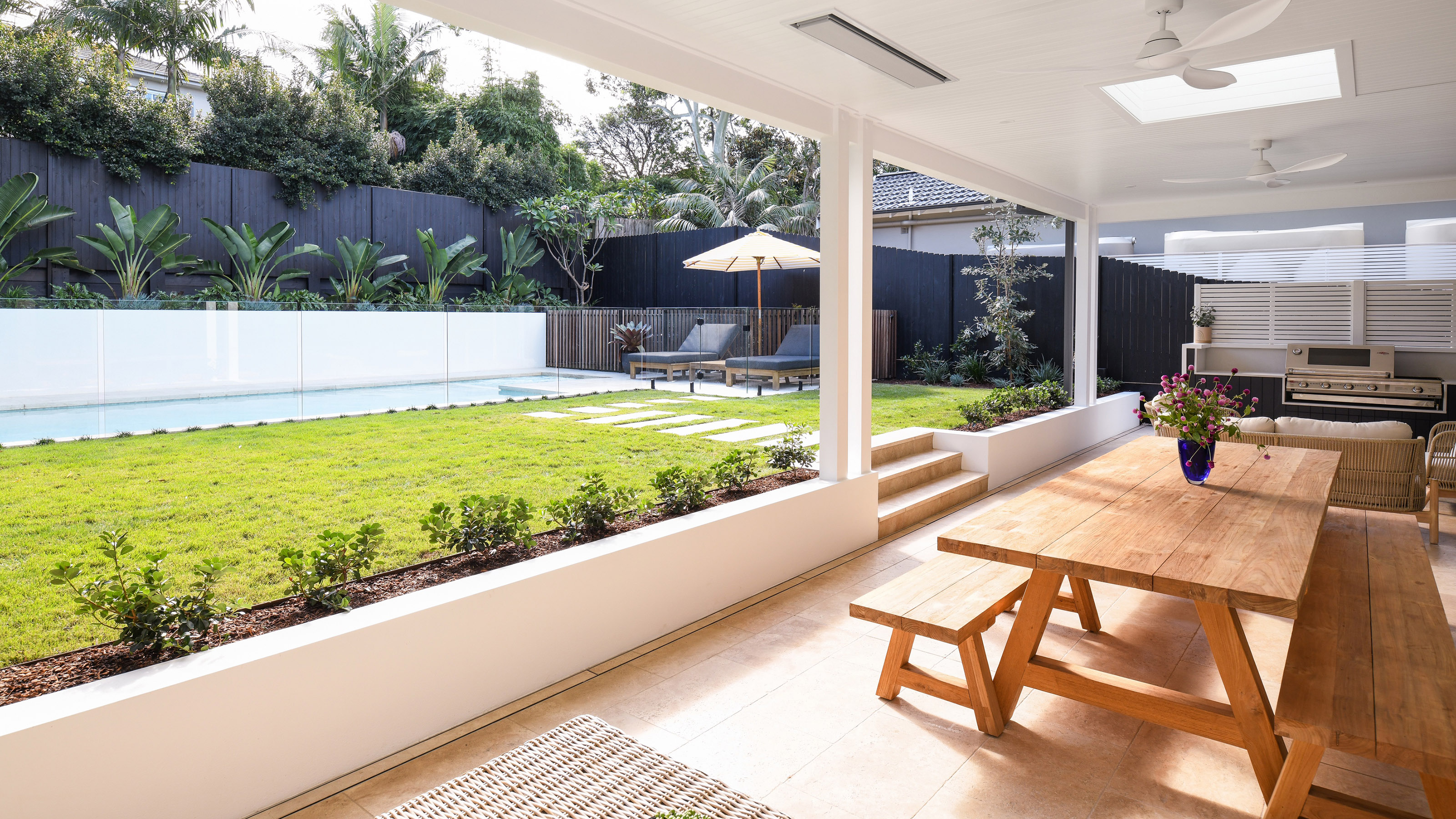
Applying landscape design principles to a new garden design project will give you guidance on how to create a well proportioned space which will deliver on the practical front too.
You may not have the means (or desire) to become a fully qualified landscape designer, but that doesn't mean that some of these skills can't be applied to your own landscaping project. Top landscape designers from the US, Australia and the UK have shared with us the principles that they apply to their designs to give you a head start on your own project.
These 10 lessons will ensure you can give your landscaping ideas an expert touch, which should be a valuable resource for any of you who are thinking about a new layout or look for your outdoor space.
The top landscape design principles to follow
Our professional design experts apply these clever landscape design principles to their own projects, but they will work just as well in your own backyard or garden, however big or small.
1. Use existing architecture to inform the landscape design
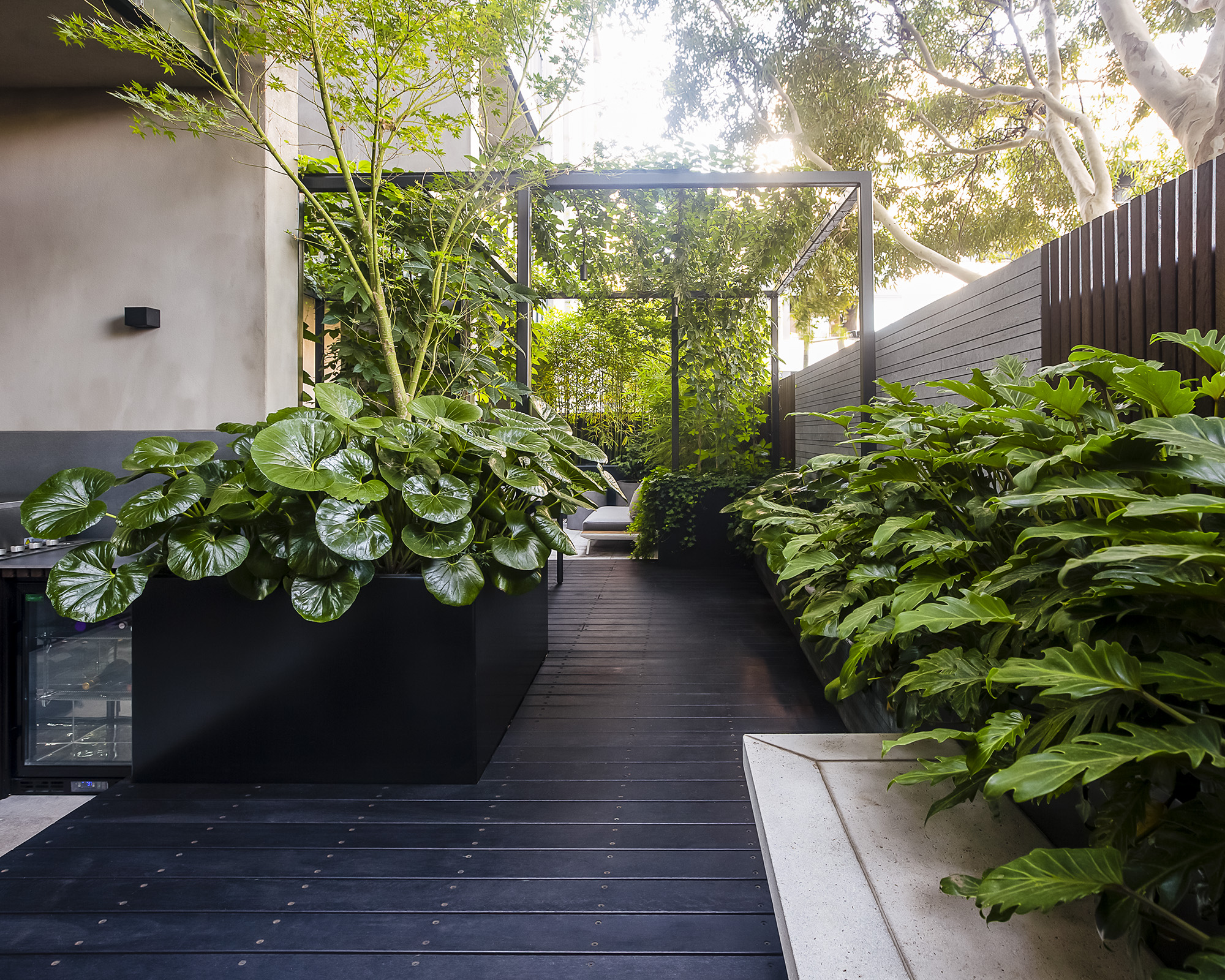
Melbourne-based landscape designer Lisa Ellis endeavours to bring a bespoke and thoughtful response to the site and the client’s design brief with each new project she works on.
'We use the architecture and views to help inform and shape the overall layout of the garden. Alignment of garden paths and beds with the architecture can create overall cohesion. Ensuring that there is a strong interface between the interior and exterior – and by creating strong connections with greenery is key to what we do.'
But Lisa also believes in trying not to be overly structured, and thinks about creating a sense of intrigue as well. 'Often a garden has a stronger allure if it’s not possible to view everything at once,' she says. 'This might be achieved through a stepped or serpentine path. Or it may be through the considered siting of a backyard tree, or perhaps even the placement of architectural wires and cascading greenery.'
Generosity in scale is also key for Lisa. 'This may be the width of a path, or the number of the same plants used in space – great scale can be the difference between a good outcome and an outstanding one,' she adds.
'We have a saying in our design studio – and it’s one of the most important ones we live by – if we use an element, we make a commitment to it and we work hard to make it shine.'
2. Balance beauty with functionality
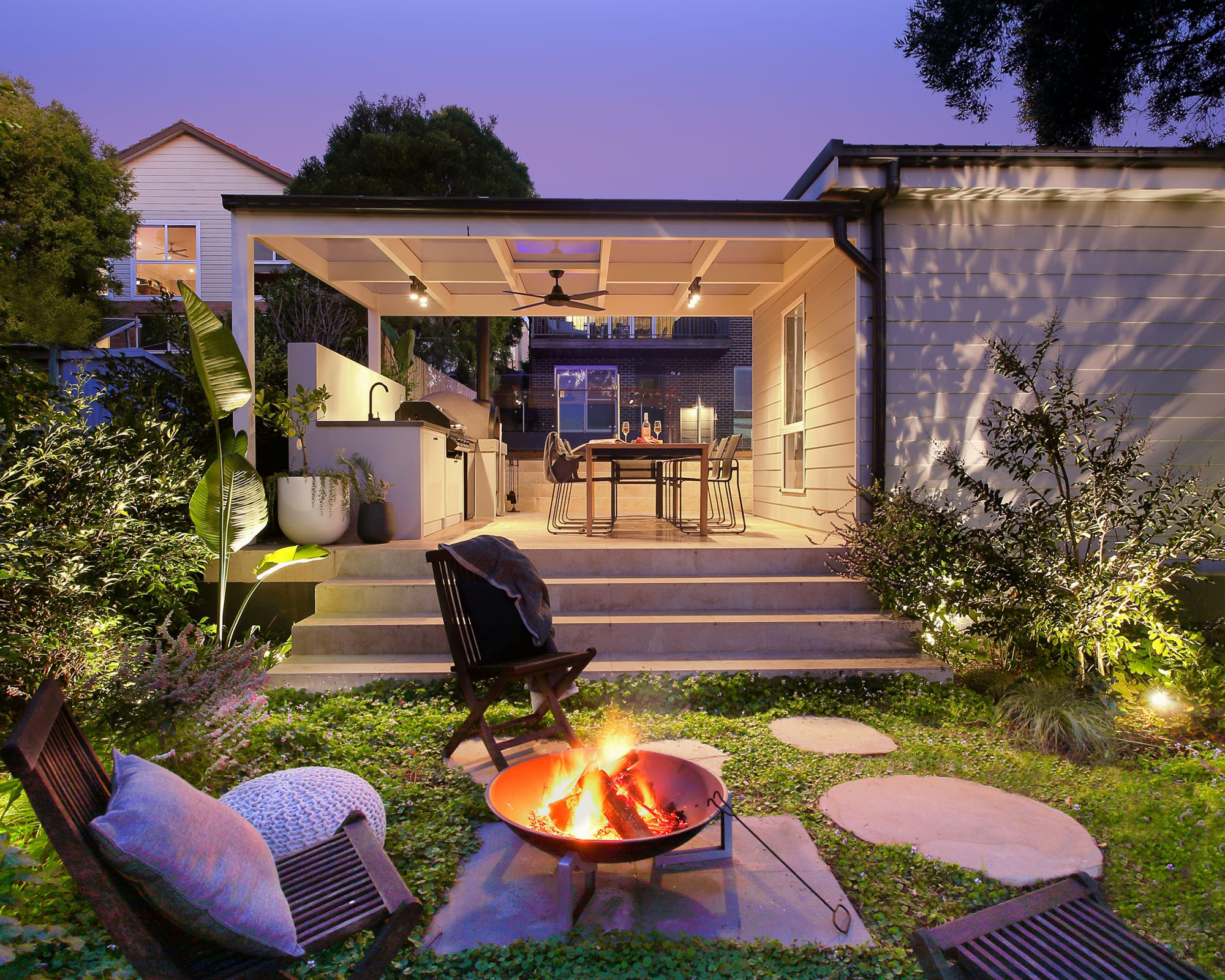
Contemporary landscape designer Claudia Crawley of Grindstone Landscapes is based in Sydney, where creating useable outdoor spaces is paramount in her designs. 'I am passionate about creating garden spaces that combine beauty and functionality that suit the property and the client,' she says. 'A great garden design should be balanced, timeless, sophisticated and suiting the lifestyle of the people living in them.'
These landscape design principles were applied to Claudia's project pictured above. 'The existing backyard was large but with a steep sloping garden lawn meaning there wasn’t much use to it. With three teenage kids and a dog the aim was to create spaces for all family members and their friends to be enjoyed,' explains Claudia.
When there are so many factors and users to be considered it can be more challenging to bring beauty into an outdoor space. But landscape design principles can still be applied to these spaces to create a space that's beautiful as well as functional.
Landscaping with shrubs will generally create a low maintenance plot and is therefore great for a busy family space. In her design Claudia used a mix of different textures and shades of green, silver, purple and soft pink. 'Plants have been selected based on their texture, color and low maintenance attributes,' says Claudia. 'Acmena ‘Sublime’ hedge has been used along the fence and behind the outdoor kitchen. The lime green new growth against the dark green foliage is beautiful – evergreen and graceful tolerating shade and sun.'
The mix is consistent with her choice of Acanthus mollies, Salvia leucantha, and Salvia 'Megans Magic', which have been combined with some stylish succulents and landscaping with grasses. This includes the likes of Miscanthus sinensis 'Hiawatha', Kalanchoe ‘Silver spoon’, Crassula ‘Blue Bird’, Carex albula 'Frosted Curls', Arthropodium cirratum 'Matapouri Bay'.
3. Go bold in a small space
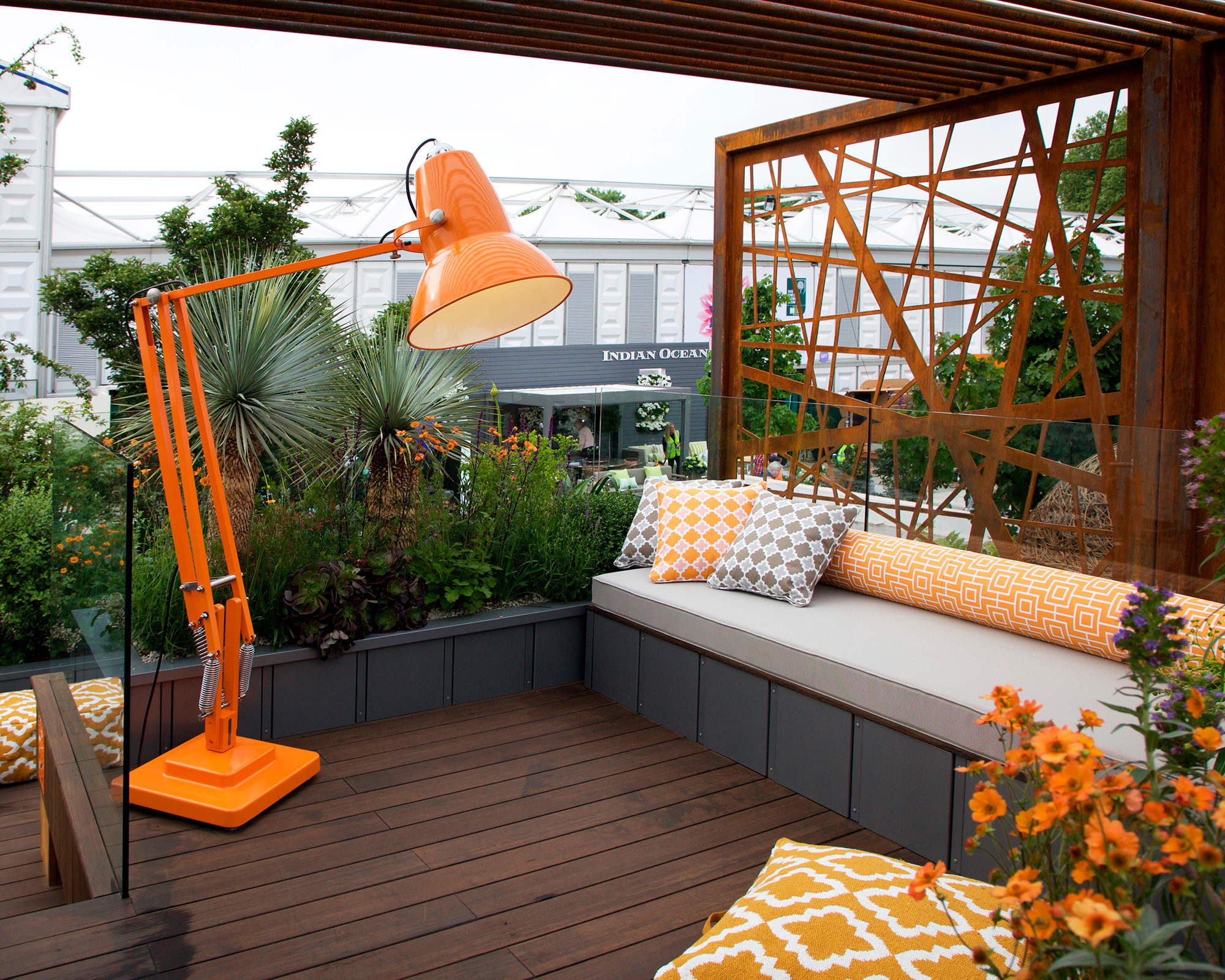
Top UK designer Kate Gould is designing a show garden at the RHS Chelsea Flower Show for 2022. 'This year our Chelsea garden is about sanctuary and using your garden for mental as well as physical health.'
The show garden is a relatively small garden so Kate decided to go big on impact. 'Small gardens demand a bold approach. If you put lots of small things in a small space it will feel smaller. Go big, go bold (even if it feels scary and wrong) and the end result will be so much better for it.'
Compact spaces will benefit from a single bold statement piece to pull it all together, rather than trying to cram lots of little pieces in. Like in Kate's 2017 Chelsea garden (pictured above) an oversized piece like the orange outdoor light will instantly give character to the space.
For your garden this could be a large architectural palm or cactus in a garden planter. Or why not try landscaping with roses and cover an upright trellis in a bold-colored rambling rose for a stunning centerpiece?
4. Repetition creates cohesion
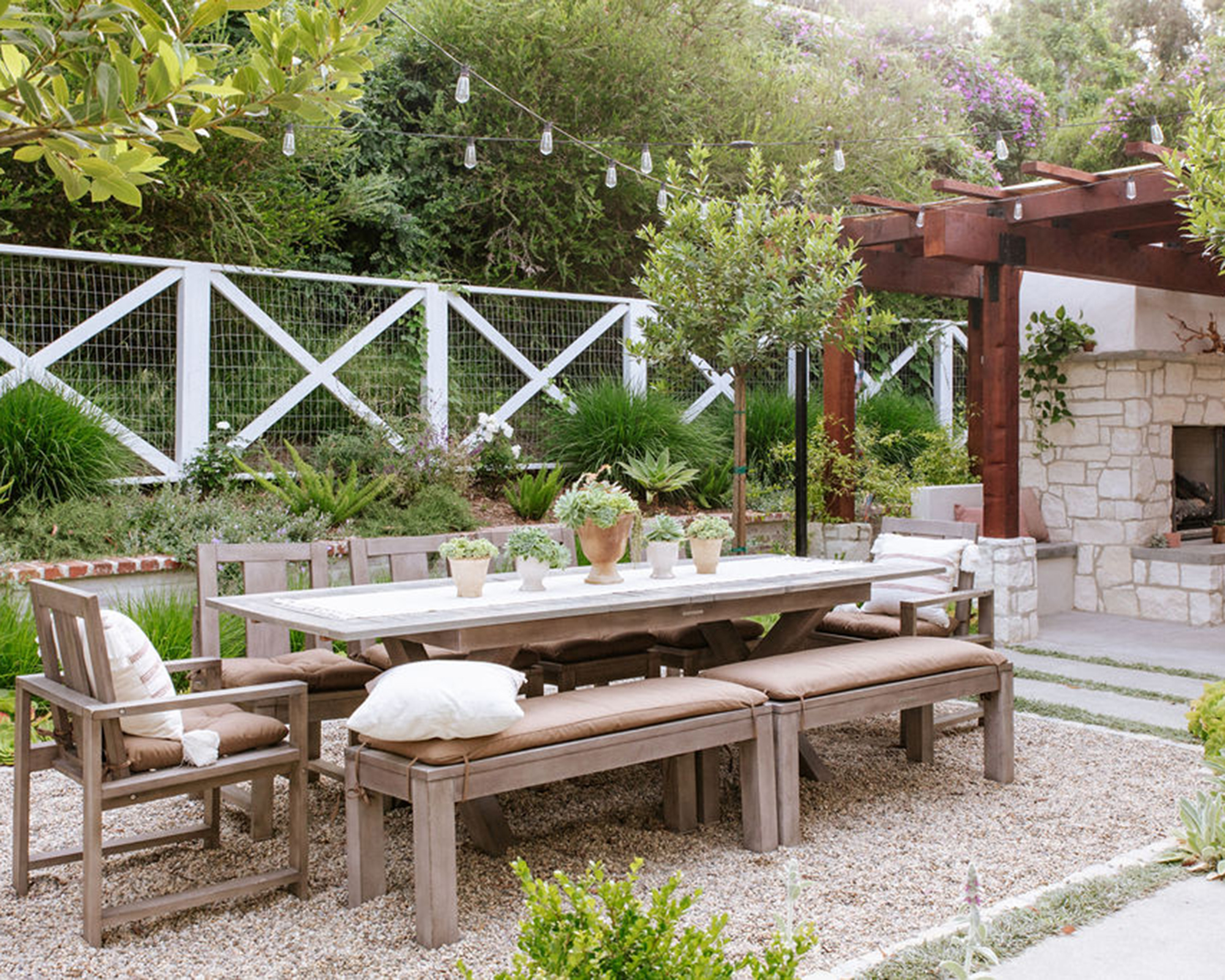
Sacha McCrae of California-based design practice Living Gardens Landscape Design utilized several landscape design principles in her garden Laguna Charm - pictured above.
'The garden design was such a fun project from the very beginning,' says Sacha. 'Our clients had a clear idea of what features they wanted in their garden, but were also very open to my suggestions. Their must-haves included a dining area to accommodate eight people, an outdoor kitchen with shade and lighting, a fire feature, patio cover and a water feature.'
These outdoor living space ideas will be similar to what many of us are looking for in our own gardens, but bringing together all these elements so that they work together requires the key design principle of repetition.
Sacha has repeated certain elements of her design to create a cohesive outdoor space. 'Repetition can be seen in the fence design, planting selection, and use of hardscape patio materials throughout the garden'.
Not overcomplicating the space is also important according to Sacha. 'Simplicity is our favorite principle – a calming, welcoming garden will always have a limited plant palette, a simple layout, and a restrained use of hardscape materials. We prefer to focus on texture and soft colors in planting with an emphasis on color in foliage plants, and forgo too many varieties or bright colors.'
'We removed all existing hardscape except for a necessary retaining wall in the backyard. We designed and installed all new patios and pathways, including the gravel seating area. There's an outdoor kitchen with arbor for shade while cooking, a gas burning fireplace, water feature ideas, new fencing, planting and lighting.'
5. Minimize your environmental impact
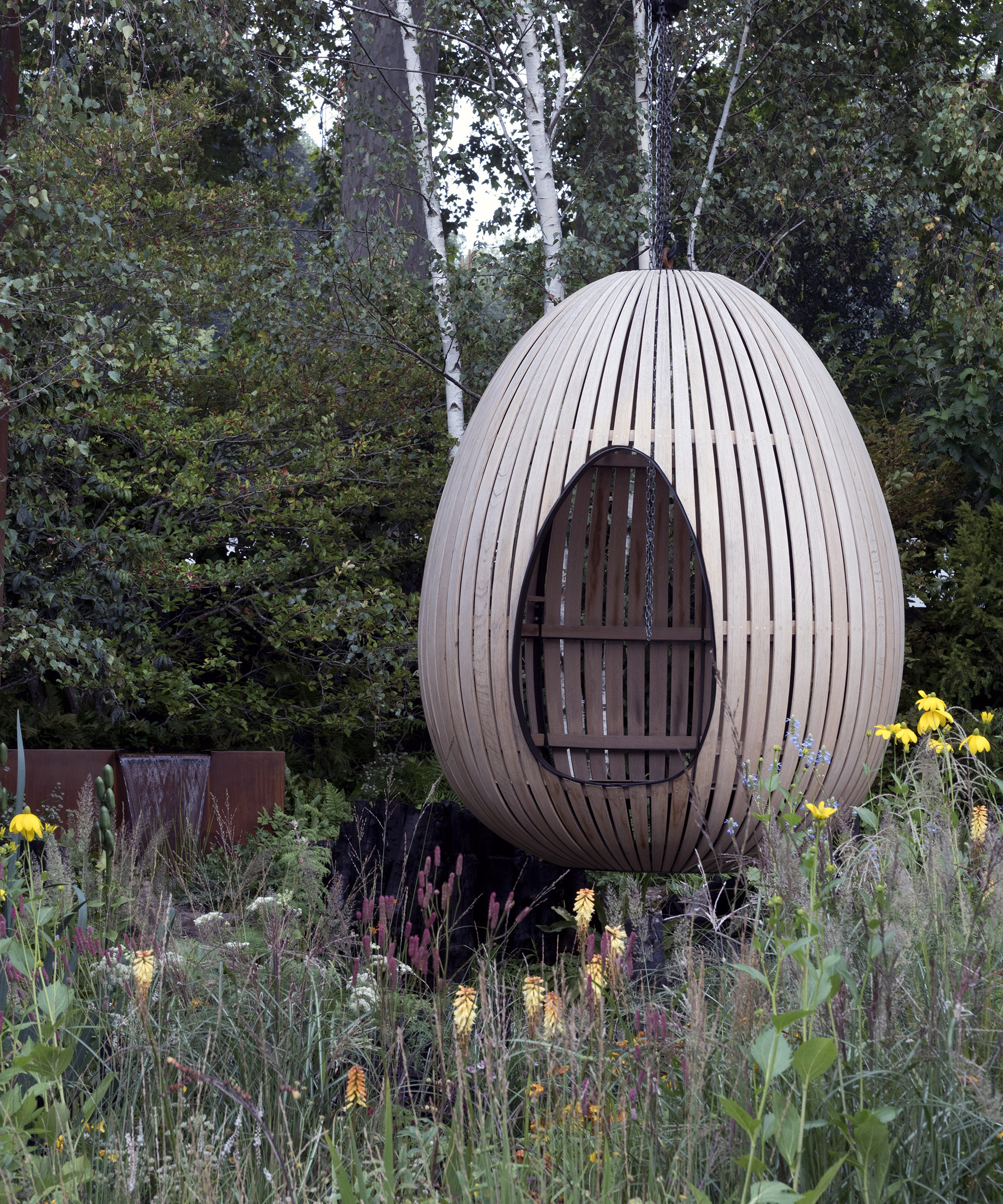
In Tom Massey's 2021 RHS Chelsea award-winning garden for Yeo Valley Organic, he demonstrated that he is leading the way for eco friendly garden design. And Tom explained that this is his most important landscape design principle. 'Ecological design, working with the site and context, minimizing environmental impact and designing sustainable and resilient gardens that promote biodiversity and support wildlife, as well as providing human visitors with a connection to the natural world, are all principles that I aim to incorporate into my designs.'
His show garden included an open meadow of flowering perennials and grasses which provided swathes of color and texture. Charred log walls were used as a garden edging idea and offered a dramatic juxtaposition to the planting whilst dividing the landscape. Formed of carbon-rich biochar ash logs, these walls were a visual representation of soil health and the importance of keeping carbon in the soil.
'The Yeo Valley Organic garden was designed as a snapshot of Yeo Valley’s practice: working organically with nature to mutual benefit,' says Tom. He hopes that people took away an understanding about the benefits of organic and how they can be implemented in any garden, large or small. 'This could be as simple as using recycled plastic pots, peat free compost or non-chemical pesticides and fertilizers, essentially a more gentle, environmentally friendly ethos,' he adds.
6. Aim for balance and proportion
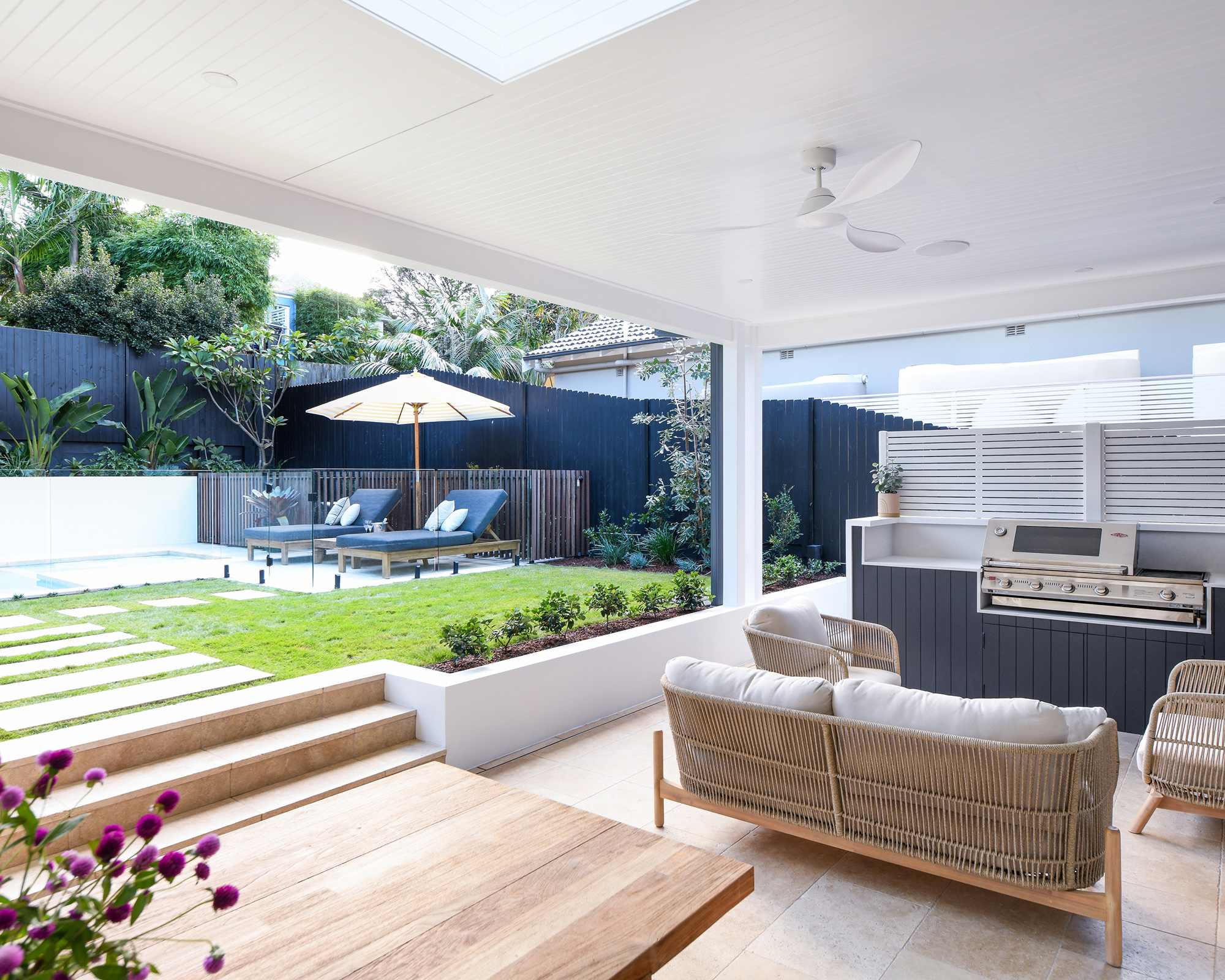
Deborah McNee of Midas Touch Gardens in Sydney created a ‘tropical resort style oasis’ by reworking the backyard area with an in-ground pool and spa, new gardens and a levelled lawn.
It's crucial to Deborah that her designs have a sense of order. To achieve this she continually looks at the scale of objects in relation to the garden. 'Proportion contributes greatly to the overall feel of the garden and I like to use photos of plants and materials which I compile onto vision boards to keep me focused on the overall balance and order,' she says.
'In time, the plants will grow and add extra vertical height which will improve their impact in this backyard landscape. Clean, modern lines with a practical level lawn area have transformed this large space. The design created a functional and aesthetically pleasing resort-style open space, complete with stylish pool landscaping and spa.'
7. Create unity with your indoor space

UK based designer Michelle Brandon is passionate that gardens should help aid our mental health. So it's important to her that the landscapes she designs provoke an emotional response for the individual.
'My design principles are client based,' Michelle explains. 'I want the client to have an affinity with their outdoor space, it has to connect with them emotionally. I design my gardens to encourage wonder, fascination and curiosity.'
Michelle believes that unity in a design comes from creating a bond with the interior and exterior, and that can be subtle or glaringly obvious. From the front yard landscaping to the interior of the house to the rear garden, there has to be a bond that links them all together.
She is also passionate that our outdoor space should work hard for us throughout the seasons. 'Success is when people are in their gardens and backyard 12 months of the year!' she adds.
8. Treat plants like fabrics in interior design
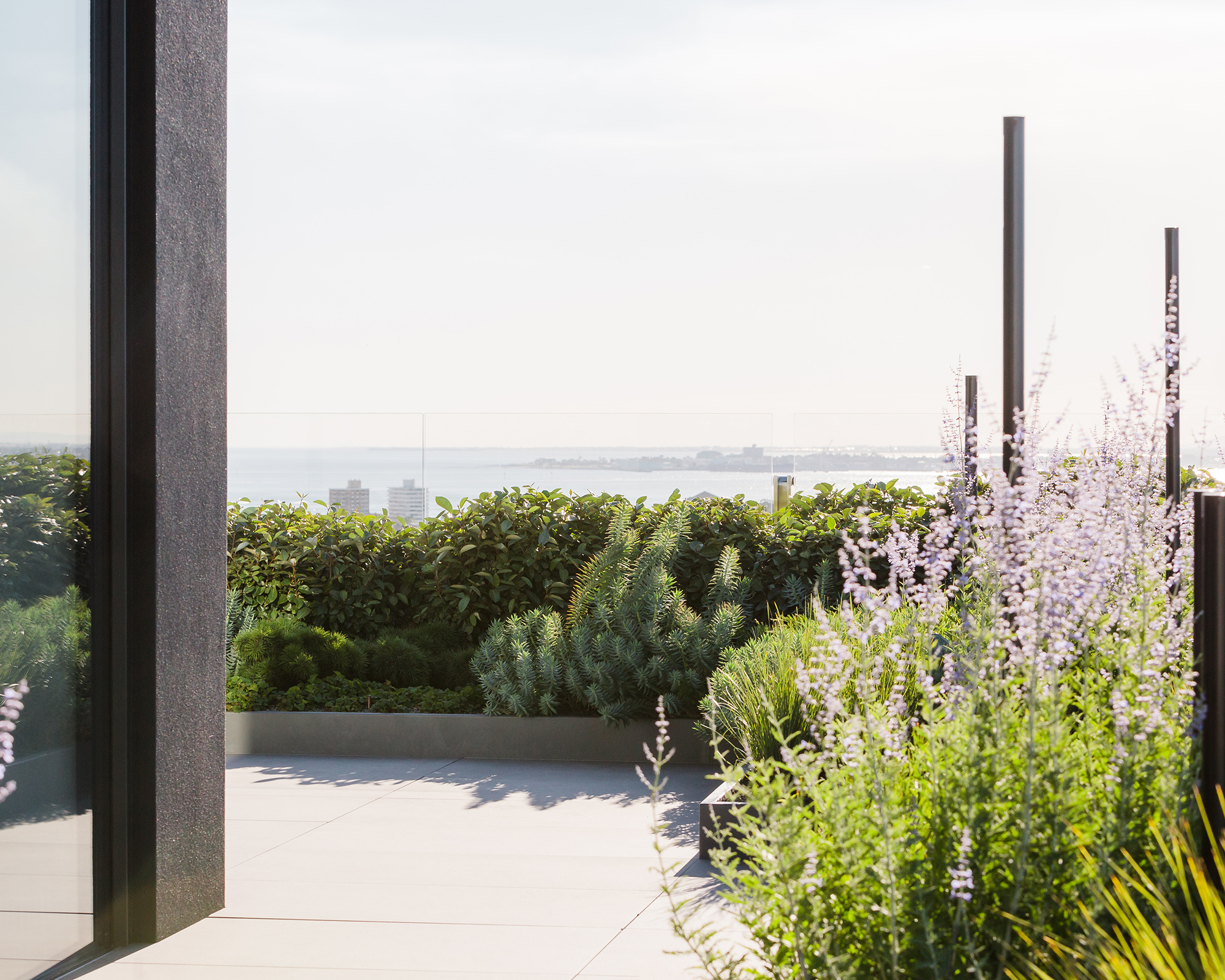
Softness and layering in planting is important in all of Lisa Ellis' projects. 'Rather than having all plants pushed to the boundary, we endeavour to bring layering in our designs,' she says.
When you're landscaping with flowers Lisa advises following this basic principle: 'Plants can be used in the garden like fabrics are used in interior design. Pairing contrasting foliage in similar color tones - and bringing plants of different textures together can bring about a luxurious and very pleasing outcome. We contemplate how plants behave in the elements – whether it be how a species might move in the wind, or sparkle in the sun.'
Evergreen structure is also important in the gardens she designs, particularly in an Australian climate where gardens can be used almost all months of the year. 'Consideration of how the garden is held together in all months with evergreen planting can extend the enjoyment considerably,' adds Lisa.
9. Separate elements should have unity
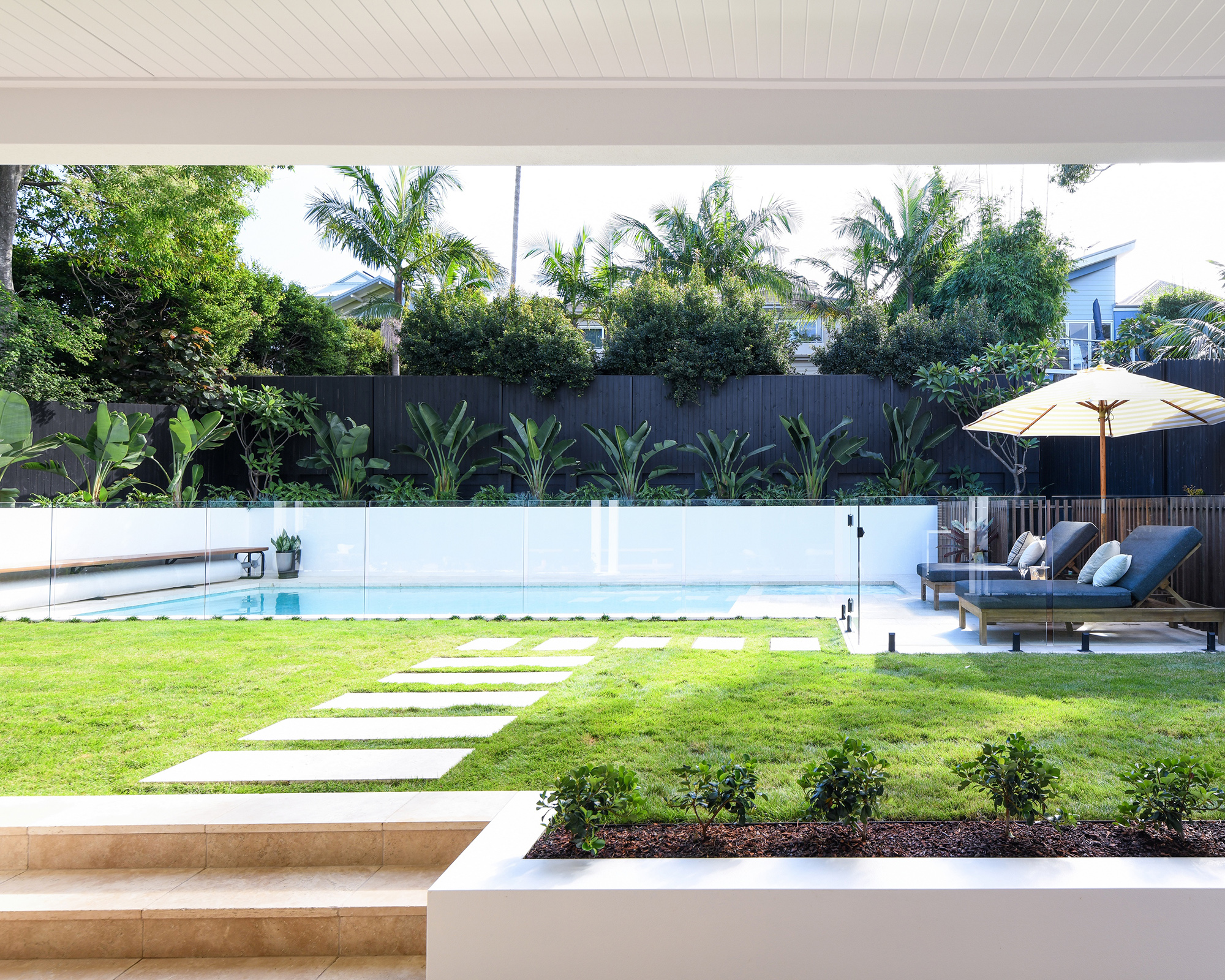
It is still possible to have order and balance in an asymmetrical layout. Which is useful to know because not all projects will allow for a perfectly symmetrical layout. Deborah McNee was able to achieve it in her design through positioning of soft and hard landscaping components either side of the centre line. Careful consideration was given to the design to ensure the area had equal visual weight. A true symmetrical balance was unable to be achieved due to the location of the pool filter equipment and spa.
By linking elements and features, unity was achieved through consistency in her design. For example, the tropical plant species Strelitzia nicolai creates a focal point by drawing attention across the lawn to the pool, and the line of Mondo grass planted at the base of the glass fence provides texture. Deborah explained that 'metal garden edging was used to interconnect garden beds to the lawn. Travertine tiles of the same size, style and color are used around the pool, as steppers in the lawn and as pavers for the undercover patio area.'
10. Creating a focal point is key
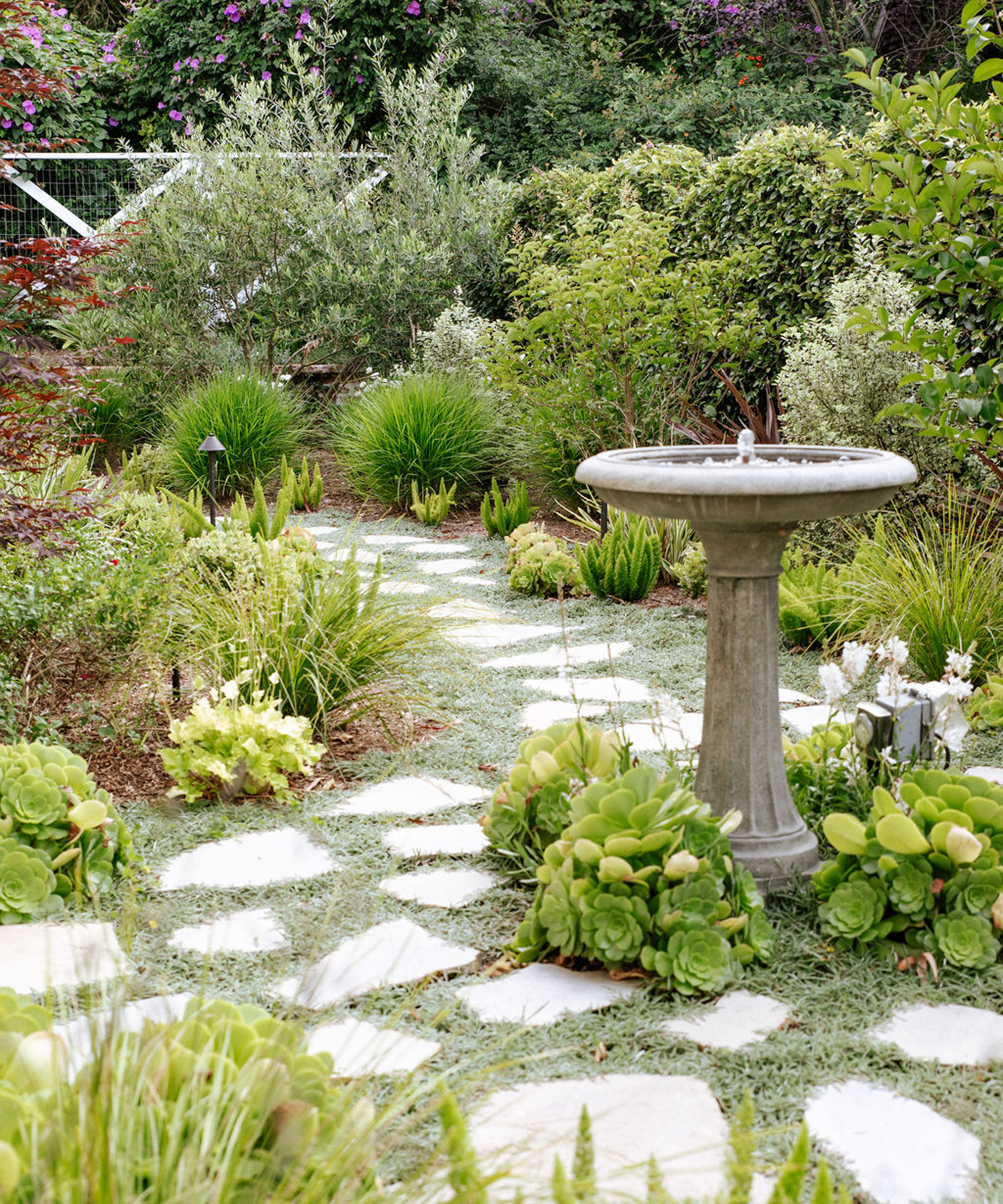
Another important landscape design principle for Sacha McCrae is focalization. This is selecting a key element in a vista to rest your eye. The image above shows how Sacha used a fountain idea to provide a focal point in a previously unused space.
What are the principles of landscape design?
Landscape designer Claudia Crawley lists these as her top landscape design principles:
- Balance between materials as well as hard and soft elements.
- Simplicity in shapes and angles that lead the eye. Color palettes should be consistent, calming and complementary to the overall style.
- Proportion of the built elements in combination with soft planting, pots and furniture elements to create balance and scale. Selection of elements to create cohesiveness and style without clutter.
- Unity in the connection of all existing and new aspects. This will help to create a seamless transition of all outdoor elements.

Teresa has worked as an Editor on a number of gardening magazines for three years now. So she is lucky enough to see and write about gardening across all sizes, budgets and abilities. She recently moved into her first home and the garden is a real project! Currently she is relishing planning her own design and planting schemes. What she is most passionate about when it comes to gardening are the positive effects it has on our mental health to grow and care for plants, as well as being great for the environment too and help provide food and shelter for wildlife.
